HIGHLIGHTS
PROGRAM UPDATES
WoodWorks Grows Tall Wood Portfolio Think Wood Launches Mass Timber Digest Showcasing Innovative Research & Projects AWC Expertise on Display in New Resource, EventsINDUSTRY NEWS
Single-Family Home Sizes Are on the Rise USFS Expert Expounds on Trees’ Carbon Storage Ability Forest Carbon Markets Primed for Growth Report Forecasts Global CLT Market to Double by 2027 The Glulum Malahat Skywalk Tourist Attraction Now Open in British Columbia Baltimore’s First Commercial Mass Timber Office Building to Break GroundINSIGHTS ON THE COMPETITION
Cemex Joins the Business Ambition for 1.5°C CampaignProgram Updates
WoodWorks Grows Tall Wood Portfolio
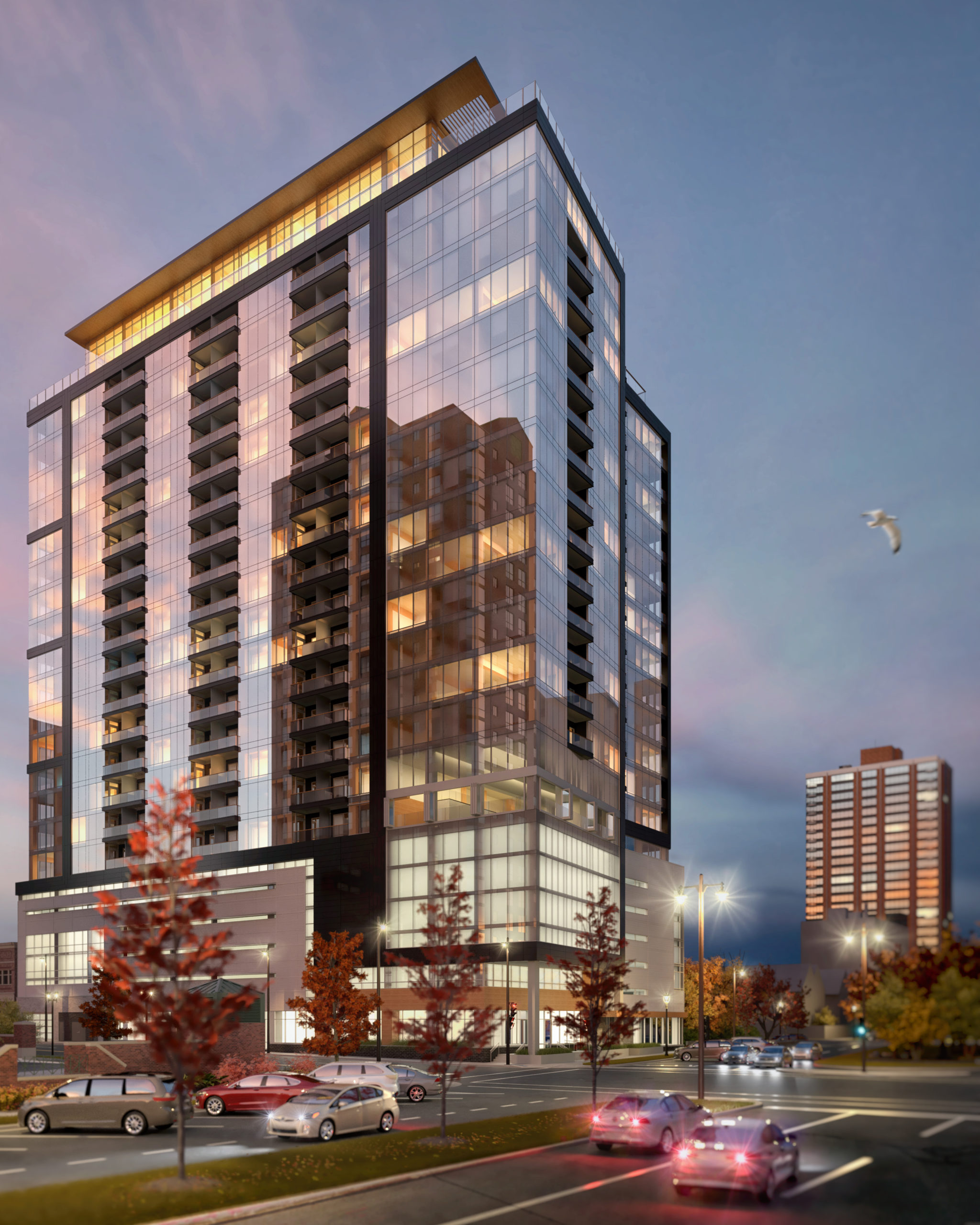
WoodWorks recently added 14 new tall wood projects to its technical assistance portfolio and has now assisted more than 120 tall wood projects to date. WoodWorks categorizes a project as tall wood based on its occupancy type, maximum height, and number of stories in relation to what is allowable under 2018 code. Recently assisted projects include:
- Ascent — Set to become the tallest mass timber structure in North America, Ascent is being built in Milwaukee, Wisconsin, and features 19 stories of mass timber over a six-story podium. Photo credit: Korb & Associates.
- 80M — Now going up, 80M includes a three-story mass timber vertical addition to a pre-existing structure. It will be the first commercial office building in Washington, D.C. to feature mass timber as an addition to an existing building.
- Apex Clean Energy Headquarters — In Charlottesville, Virginia, Apex’s new eight-story HQ is being built of CLT sourced from 1.6 million board feet of black spruce. CLT is central to the project’s sustainability ambitions and offers significant schedule savings while minimizing community impact. See live visual updates of the project here.
- Intro — Nearing construction completion in Cleveland, the 512,000-square-foot Intro multifamily project includes eight stories of mass timber over a concrete podium and exposed CLT ceilings supported by glulam columns and beams.
Intro, in particular, meshes trends and highlights the emerging opportunity available for mass timber multifamily projects in the six- to 12-story range. Approximately 64% of mass timber projects under design in the United States are multifamily projects, and 85% of WoodWorks’ tall wood portfolio are in the six- to 12-story range. WoodWorks and the SLB have placed strategic importance on this category of construction. The SLB’s Mass Timber Outlook predicts that incremental demand will grow by approximately 1.7 billion board feet in the six-to 12-story range through 2035, delivered through nearly 500 building projects.
Think Wood Launches Mass Timber Digest Showcasing Innovative Research & Projects
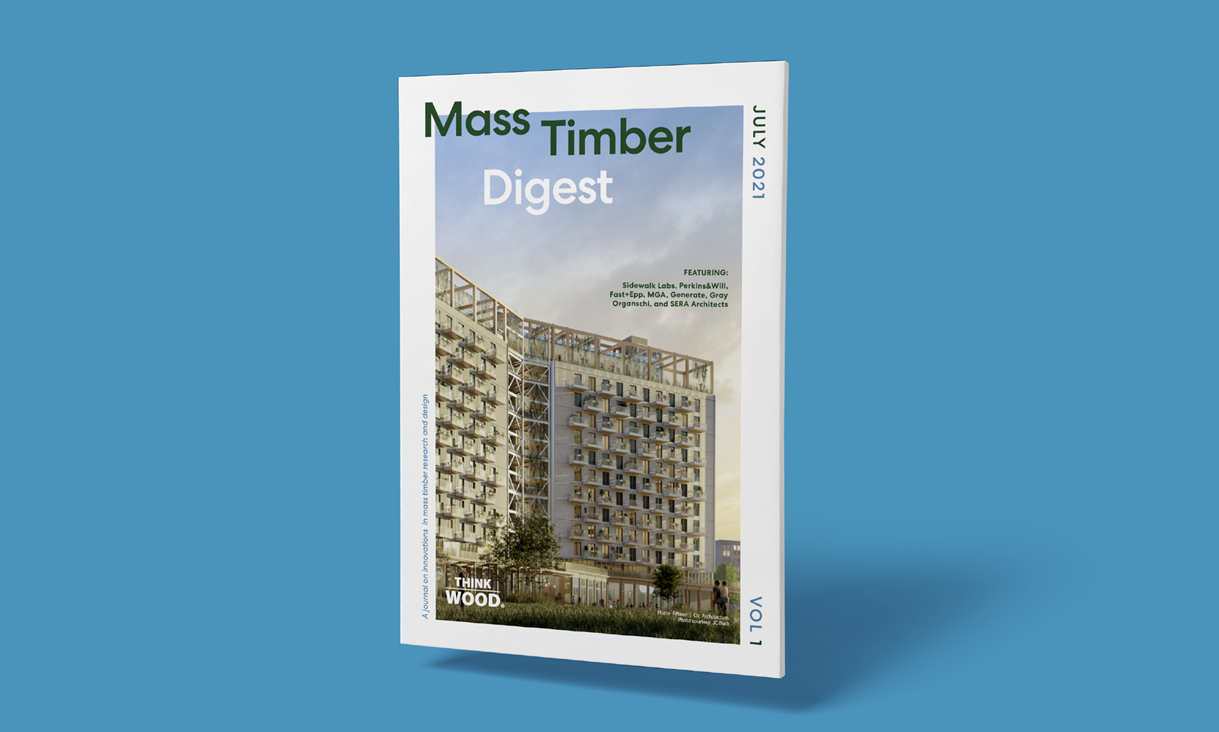
In response to increasing demand for information on low-carbon building solutions, Think Wood has debuted the first volume of a biannual publication, the Mass Timber Digest, a 30-page journal on innovations in mass timber research and design. The downloadable PDF features new and emerging mass timber research with support and permission from industry leaders Sidewalk Labs, Perkins&Will, DLR Group, Michael Green Architecture, Gray Organschi Architects, Generate Technologies, and SERA Architects. Featured articles include “Designing a Mass Timber Hotel,” “Using Buildings for Carbon Storage,” “Testing Prefab Prototypes,” “Comparing Structural Building Systems,” and “Boosting Density While Curbing Climate Impacts.”
Since launching in late July, the Digest has been downloaded more than 2,100 times, ranking as one of the campaign’s most popular resources in the past two months. The piece also headlined Google’s Sidewalk Labs’ weekly newsletter in late July, further signaling industry support and interest in mass timber.
Throughout Q3, the Digest has been promoted on Think Wood’s website and via media partnerships and paid social media and search campaigns. The second volume of the Digest is tentatively scheduled for publication in Q2 2022. The Digest is aligned with Think Wood’s strategy of producing high-value resources that engage architecture, engineering, and construction professionals and nurturing those prospects into qualified leads.
AWC Expertise on Display in New Resource, Events
The AWC continues to solidify its reputation as an authority on wood design and code acceptance through expert commentary, technical inputs, and high-quality education to audiences nationwide. In August, the AWC released the 2021 Special Design Provisions for Wind and Seismic (SDPWS) Commentary, which describes changes to the 2021 edition, including new provisions on cross laminated timber (CLT) shear wall design and diaphragm systems, weak story requirements, and cantilevered diaphragm deflection equations. Concurrently, the AWC guided more than 1,200 building and design professionals—a record number—through the SDPWS changes during a new continuing education webinar. View the Commentary now on the AWC’s website, and access the webinar here.
Separately, the AWC presented on the fire safety of tall mass timber at the annual FDIC International conference in Indianapolis in August. FDIC International is the largest firefighting event in the world, and by being among the small number of guests invited to present, the AWC expanded its reach and made new contacts among key fire-service professionals and leadership.
Industry News
Single-Family Home Sizes Are on the Rise

According to NAHB’s Eye on Housing, the average size for new single-family homes is on the rise, driven by the pandemic’s impacts on working and living habits. According to second quarter 2021 data from the Census Quarterly Starts and Completions by Purpose and Design and NAHB analysis, median new single-family floor area increased to 2,297 square feet, and average square footage increased to 2,540. On average, new single-family homes are now 5.5% larger than during the Great Recession of 2007 to 2009. NAHB expects larger home sizes to persist as a consumer preference in the post-Covid-19 environment. Read more about this trend here.
NAHB also found that the custom home share decreased to 17.8 percent of all single-family homes started in 2020—the lowest the annual custom home share has been since the 2005 re-design of the SOC. The custom home market consists of contractor-built and owner-built houses—homes built one at a time for owner occupancy on the owner’s land, with either the owner or a builder acting as a general contractor. Read more about this trend here.
USFS Expert Expounds on Trees’ Carbon Storage Ability
In a recent blog, Amy Androff of the U.S. Forest Service’s Forest Products Laboratory heralded the role of trees and wood products in mitigating global climate change. In one year, a mature live tree can absorb more than 48 pounds of carbon dioxide, which is stored until the tree—or its wood product derivative—experiences a physical event like fire or decomposition. Androff notes that through the use of life cycle assessments (LCAs), researchers have concluded that, with sustainable forest management in place, carbon-storing “forests and wood products will have the greatest potential to lessen climate change impacts.” Androff also cites LCA studies that have found that CLT buildings have a lower carbon footprint and store more carbon than buildings constructed from non-timber materials.
Read more from Androff here.
Forest Carbon Markets Primed for Growth

A Minnesota-based environmental management organization, Dovetail Partners, has released a new report on carbon credits in the U.S. forest sector, covering the status of voluntary and regulatory carbon markets and recent developments.
The report notes that the United Nations Intergovernmental Panel on Climate Change (IPCC) has specifically identified high-carbon storage/low-embodied carbon substitutes for concrete and steel in construction, such as mass timber, as one of several viable forestry-related options for mitigating climate change. Wood products and other identified options provide the basis for forest carbon offsets, and cumulatively, the potential market for these offsets could reach up to 5 billion metric tons of CO2 equivalent by 2030. Existing voluntary markets are only providing 8 to 13% of what the domestic market may demand within a decade, suggesting substantial room for growth. Growth will hinge on effective policy actions, forest stewardship, and landowner engagement.
Read Dovetail Partners’ report here.
Report Forecasts Global CLT Market to Double by 2027
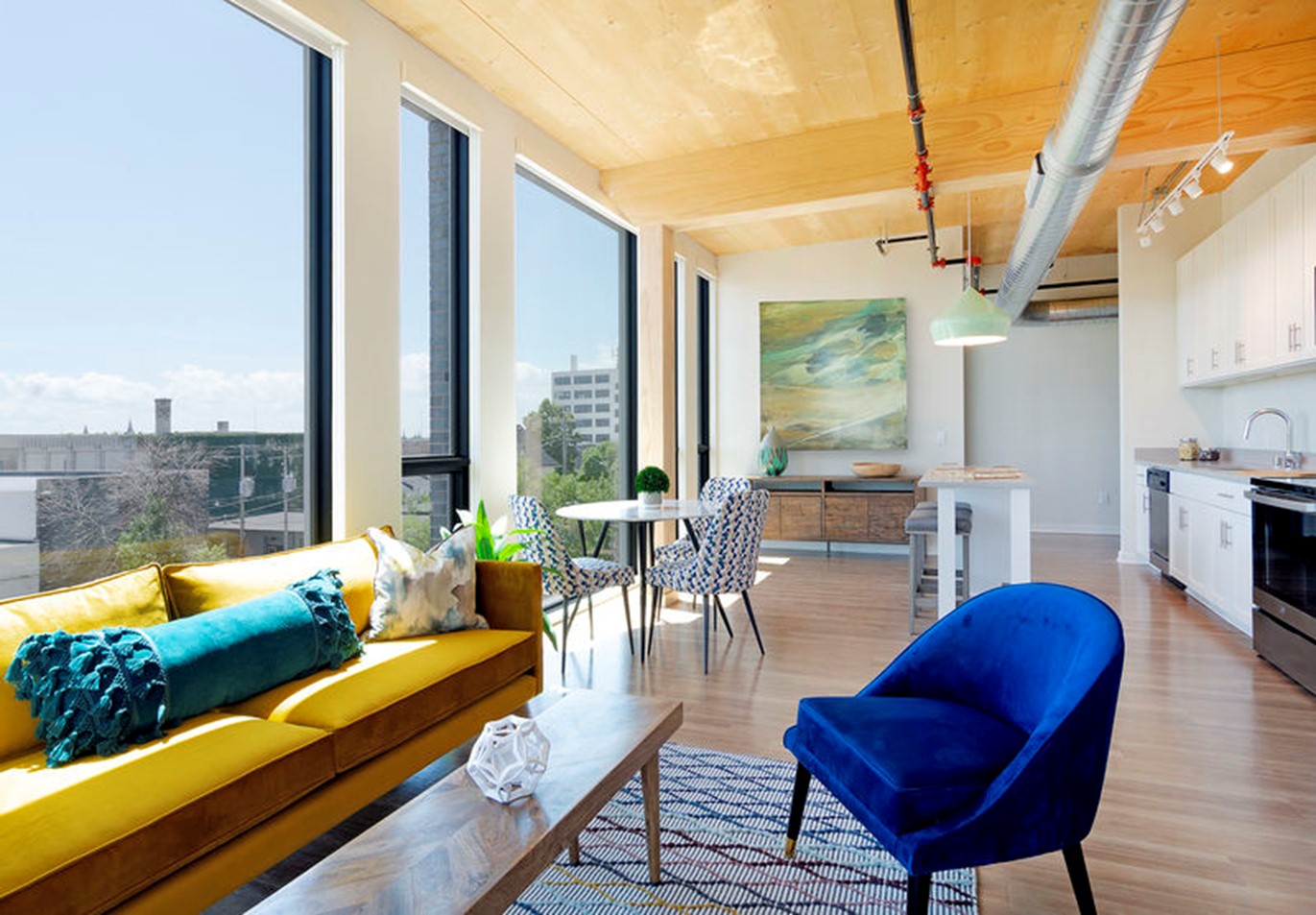
Pallet Enterprise recently reported on the latest innovations and commercialization efforts in new uses for wood and cellulose material to minimize carbon emissions. The piece cited CLT as a “wood residual success story,” noting that the global CLT market is expected to grow by double digits this decade, exceeding a market valuation of $2.25 billion by 2027. Building owners, designers, and occupants alike are increasingly gravitating to CLT buildings for their environmental benefits. North America accounts for about 43% of global production, with 14 plants online and three other facilities under development.
The piece also provides market updates for wood fiber insulation, transparent wood glass, 3D printing using sawdust, and cellulose batteries.
Read more here.
The Glulam Malahat Skywalk Tourist Attraction Now Open in British Columbia
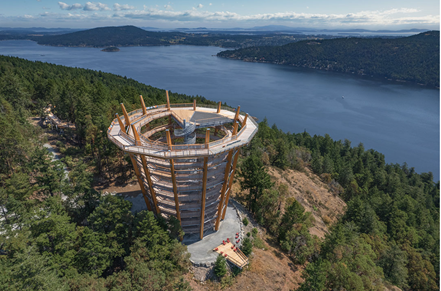
Designed by ASPECT and Murdoch & Company, the 10-story Malahat Skywalk & Visitor Centre is now open to visitors on Southern Vancouver Island in British Columbia. Visitors pass through a one-story visitor center made of mass timber and light-wood frame before ascending a 650m-long wooden walkway to reach stunning views of Finlayson Arm, Saanich Peninsula, Mount Baker, and the Coast Mountains in the distance. The 65-feet-tall spiral walk was constructed using glulam columns, with steel X-bracing encasing the perimeter and outriggers supporting the wooden walkway.
Read more about and see photos of the Skywalk here.
Baltimore’s First Commercial Mass Timber Office Building to Break Ground
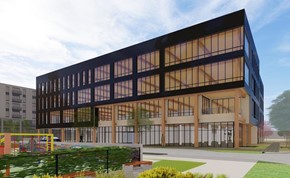
As reported in ENR, developers will break ground on a four-story, 94,000-square-foot mass timber office building in downtown Baltimore this fall, the city’s first. The developer, 28 Walker, stated that it “chose to utilize heavy timber based on the material’s positive energy efficiency attributes, creating an organically warm exterior and interior design with flooring, columns, and exposed ceilings all comprised of natural wood.”
The project, which was announced in early 2021, has recently undergone a redesign because of revised lease depths.
Read more about the project here.
Insights on the Competition
Cemex Joins the Business Ambition for 1.5°C Campaign

Multinational cement giant Cemex has signed the Business Ambition for 1.5°C commitment, pledging to set and meet a net-zero, science-based target for company operations in line with a 1.5°C future. The Business Ambition is led by the We Mean Business Coalition in partnership with the Science Based Targets initiative and the United Nations Global Compact and is aligned with the Race to Zero campaign of the UN Framework Convention on Climate Change. To date, more than 750 companies have made similar commitments.
Cemex had previously announced its intention to reduce its carbon footprint by delivering net-zero concrete globally by 2050 as part of its Future in Action program.
Read more about Cemex’s carbon commitment here.
Industry Resources
FEA’s Housing Dashboard
This housing dashboard is provided compliments of Forest Economic Advisors (FEA):
View the September Dashboard
Virginia Tech's Monthly Housing Report
This monthly housing commentary report is a free service of Virginia Tech and is intended to help one gauge future business activity in the U.S. housing market.
July 2021 Reports (released in September 2021)
Part A: July Housing Commentary
Part B: July Economic Conditions

